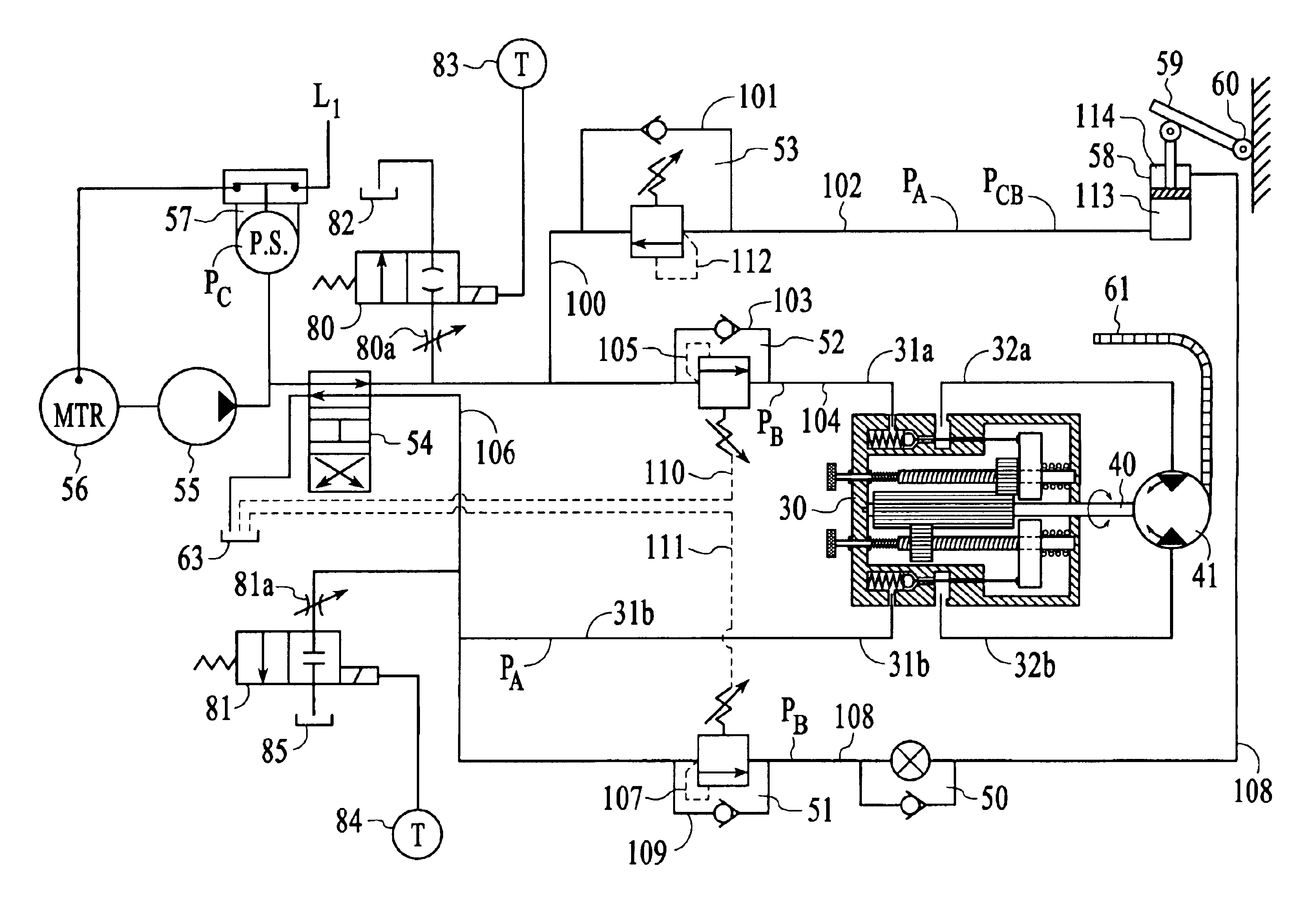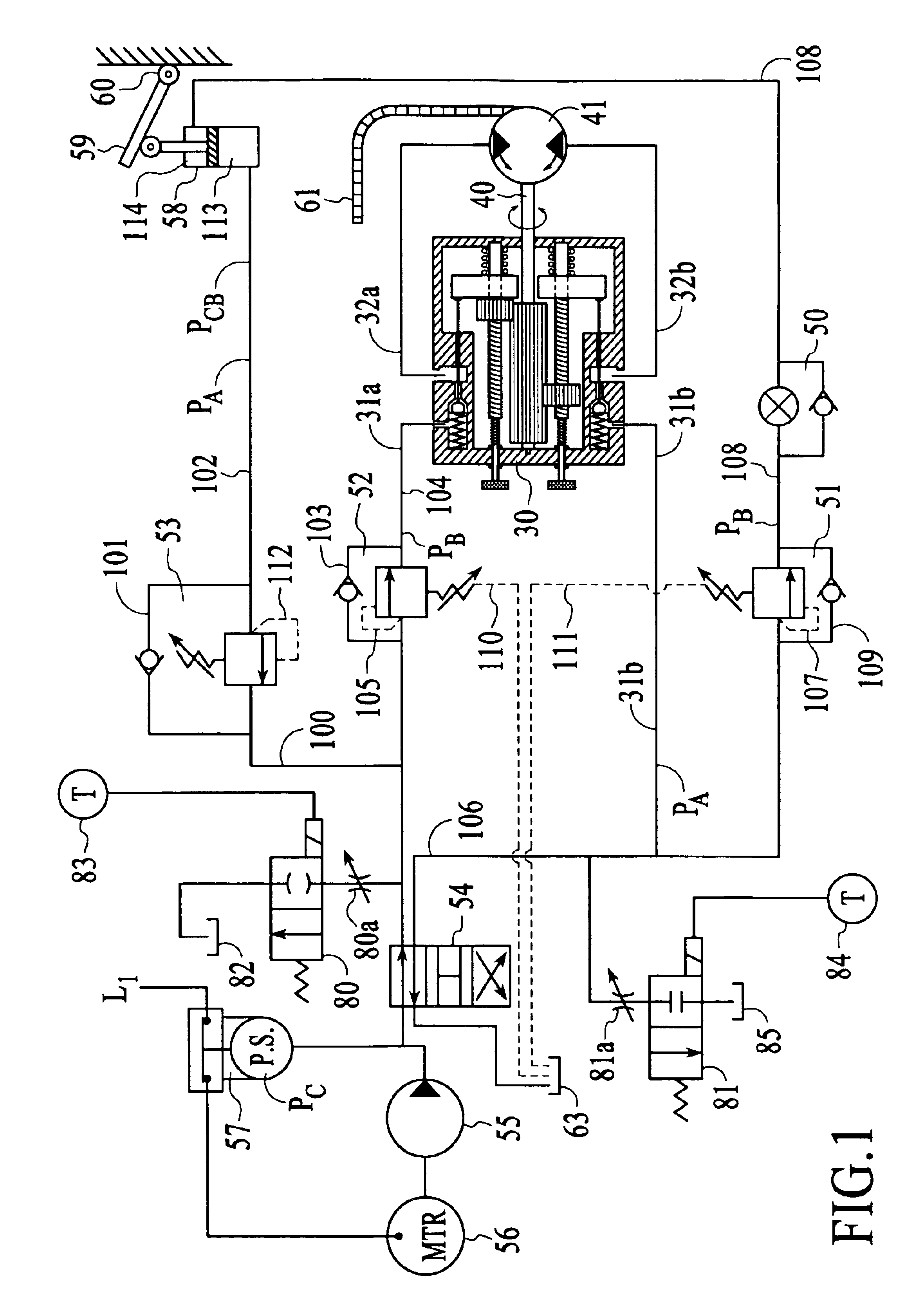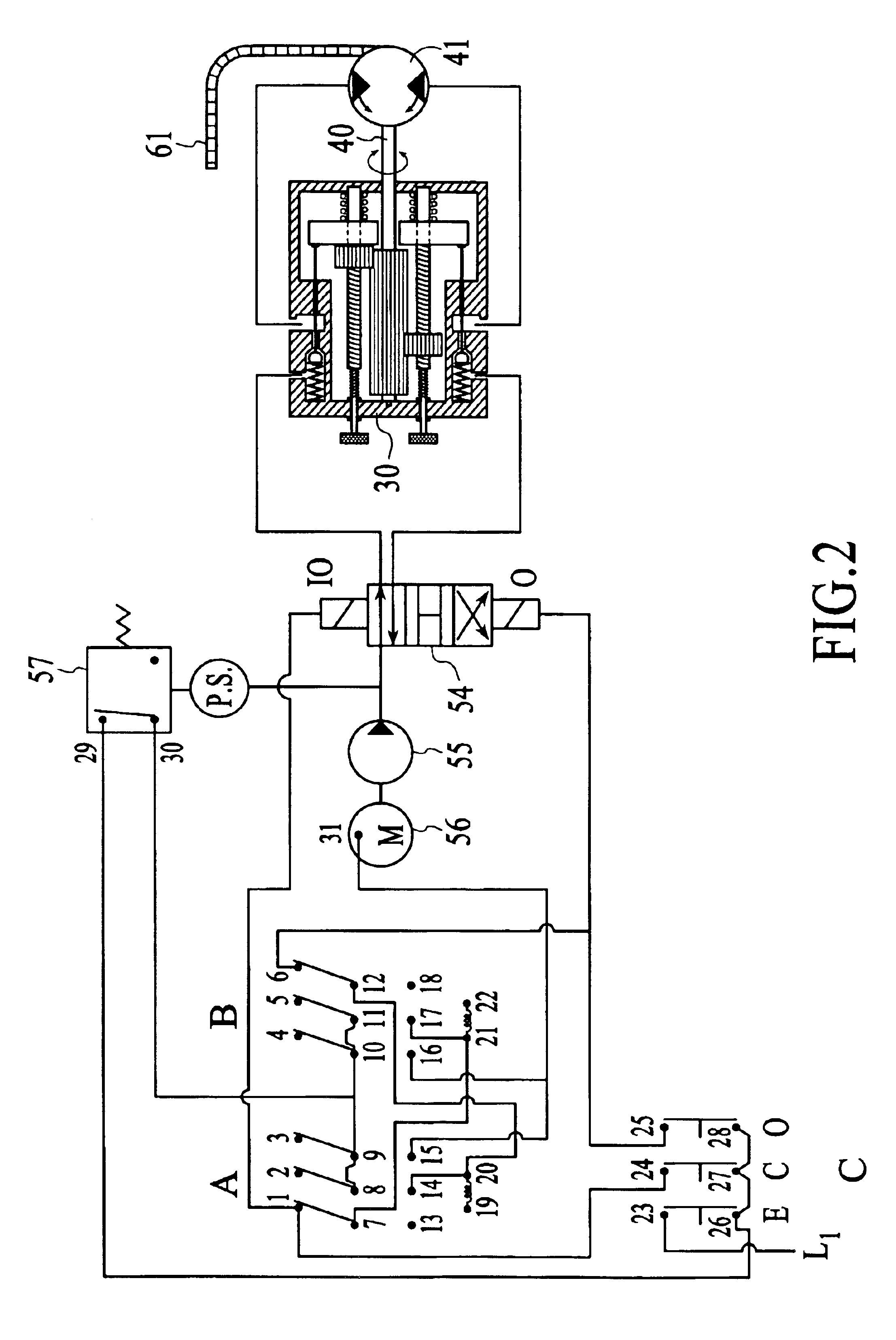Hydraulic/pneumatic apparatus
a technology of hydraulic/pneumatic actuator and actuator, which is applied in the direction of fluid coupling, shutter/movable grille, servomotor, etc., can solve the problems of not ensuring swimming pools, severe damage to the cover slats, and the need to overcome the passive force during retraction, so as to achieve the effect of easy and simple control of the speed of a particular operation
- Summary
- Abstract
- Description
- Claims
- Application Information
AI Technical Summary
Benefits of technology
Problems solved by technology
Method used
Image
Examples
Embodiment Construction
[0028]The invented hydraulic or pneumatic actuation system is presented in context of hydraulically powered automatic swimming pool cover systems such as those Applicant described in U.S. Pat. No. 5,184,357 entitled AUTOMATIC SWIMMING POOL COVER WITH A DUAL HYDRAULIC DRIVE SYSTEM, and U.S. Pat. No. 5,546,751 entitled ANTI-CAVITATION MANIFOLD FOR DRIVE COUPLED, DUAL MOTOR, REVERSIBLE HYDRAULIC DRIVE SYSTEMS, modified for driving buoyant slatted or floating pool cover systems, both of which are incorporated herein reference.
[0029]Looking at FIG. 1, when operating a buoyant slatted or floating cover system in conjunction with a lid covering system, it is important to ensure that the lid 59 is first fully opened before the cover 61 is allowed to move from its fully retracted position. Likewise, it is important assure that the lid 59 has not drifted closed before retracting the cover 61 from its fully extended position covering the pool.
[0030]The invented hydraulic / pneumatic actuation sy...
PUM
 Login to View More
Login to View More Abstract
Description
Claims
Application Information
 Login to View More
Login to View More - R&D
- Intellectual Property
- Life Sciences
- Materials
- Tech Scout
- Unparalleled Data Quality
- Higher Quality Content
- 60% Fewer Hallucinations
Browse by: Latest US Patents, China's latest patents, Technical Efficacy Thesaurus, Application Domain, Technology Topic, Popular Technical Reports.
© 2025 PatSnap. All rights reserved.Legal|Privacy policy|Modern Slavery Act Transparency Statement|Sitemap|About US| Contact US: help@patsnap.com



